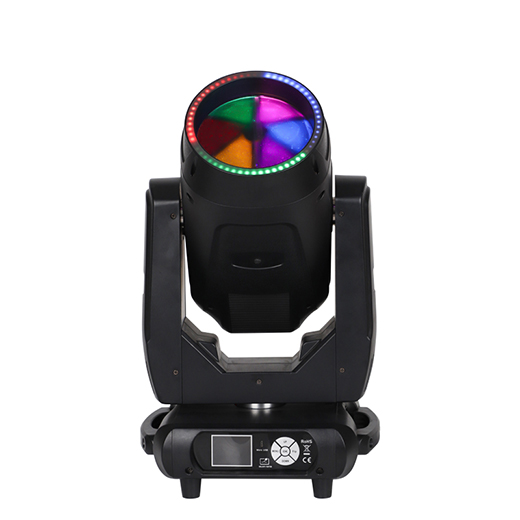Introduction
Lighting has evolved from a functional necessity into a powerful emotional and interactive tool. In the modern era of immersive events, multimedia experiences, and smart technology, lighting plays a vital role in engaging audiences through interactivity. Whether it’s a concert, theater, art installation, or smart city activation, lighting design now responds to presence, motion, sound, and emotion—turning viewers into participants.
This article explores the cutting-edge trend of interactive experience in lighting design, with a focus on two advanced fixtures from Blue Sea Lighting:
1. What Is “Interactive Lighting”?
Interactive lighting refers to any system where the lighting reacts or responds to a real-time stimulus—such as motion, sound, presence, temperature, or user control via app or sensor. It enhances immersion, emotion, and engagement by:
Responding to live performers
Reacting to sound and rhythm
Changing via mobile or touch input
Transforming based on crowd movement or density
2. Core Technologies Behind the Trend
Pixel Mapping: Each LED pixel can be individually controlled for stunning graphics and animations.
DMX & RDM Protocols: Enable smart control and real-time programming adjustments.
Zoom Functionality: Allows wash lights to create wide or narrow fields of light.
Halo Rings & LED Rings: Add an emotional “face” to the light, visually enhancing interaction.
App Integration: Allows audiences to influence lighting directly via mobile apps or QR-triggered experiences.
3. Recommended Fixtures from Blue Sea Lighting
🔷 12pcs 40W RGBW 4in1 Pixel Zoom LED Wash Moving Head Light
![]()
This professional-grade wash light features 12 powerful 40W RGBW LEDs with pixel mapping and a motorized zoom function. It enables ultra-smooth color mixing, dynamic beam shaping, and immersive pattern creation. Ideal for concerts, TV studios, interactive exhibitions, and large-scale shows.
Key Highlights:
12 individually controllable LEDs
4-in-1 RGBW color mixing
Pixel chase & kaleidoscope effects
Zoom angle from 4.5° to 60°
High-speed pan/tilt movement
Interactive Use Case:
In a live DJ set, the pixels chase to the beat and zoom automatically adjusts to match the tempo. Through DMX, crowd volume triggers color temperature transitions.
🔷 311W Beam Moving Head Light with Halo

A stunning hybrid of sharp beam and visual interaction. The beam effect cuts through haze with precise 311W output, while the surrounding halo ring adds pixel-controlled color for layered visual emotion. A perfect balance between spotlight precision and atmospheric ambient lighting.
Key Highlights:
Powerful 311W beam output
Integrated RGB halo ring
3-facet prism for multi-beam effects
Dynamic rotation and color chase
DMX control with pre-built effects
Interactive Use Case:
On a stage performance, the beam highlights solo acts while the halo shifts color in response to audience applause volume—creating a living feedback loop.
4. Applications of Interactive Lighting
| Environment | Interactive Feature |
|---|---|
| Concerts | Lights respond to audience energy and music tempo |
| Theme Parks | Sensor-triggered lights along visitor paths |
| Corporate Events | Brand colors shift based on session themes or presenter mood |
| Nightclubs | Real-time pattern changes via DJ mixer feed |
| Museums/Art Spaces | Audience movement creates color animations across the room |
5. Design Strategies for Implementing Interactivity
Pre-programmed Triggers: Use audio or motion detection to switch between lighting scenes.
Audience Feedback Loops: Allow audience input (clap, app, or movement) to affect lighting changes.
Layered Fixtures: Combine wash and beam to form multi-dimensional lighting architecture.
Test with Visualizers: Use software to simulate interactivity before deployment.
Safety and Reliability: Ensure fixtures are IP-rated and tested for environmental stress.
6. Future Outlook: The Rise of Emotion-Aware Lighting
Interactive lighting is evolving to not only respond to action—but to emotion. With the growth of emotion-sensing wearables and AI algorithms, lights will soon be able to reflect the collective feeling of a space. Imagine a light show that turns blue when the crowd grows quiet, or explodes in warm reds when excitement peaks.
Conclusion
Interactivity in lighting isn’t just an enhancement—it’s becoming a necessity. As spaces demand deeper engagement and personalization, lighting designers need flexible, responsive, and visually stunning tools. With its innovations like the 12pcs 40W RGBW 4in1 Pixel Zoom LED Wash Moving Head Light and the 311W Beam Moving Head Light with Halo, Blue Sea Lighting leads the way into the future of immersive lighting design.





Blue Sea Lighting is an enterprise with rich experience in the integration of industry and trade in stage lighting and stage special effects related equipment. Its products include moving head lights, par lights, wall washer lights, logo gobo projector lights, power distributor, stage effects such as electronic fireworks machines, snow machines, smoke bubble machines, and related accessories such as light clamps.
Quick Links
For more questions subscribe to our email








